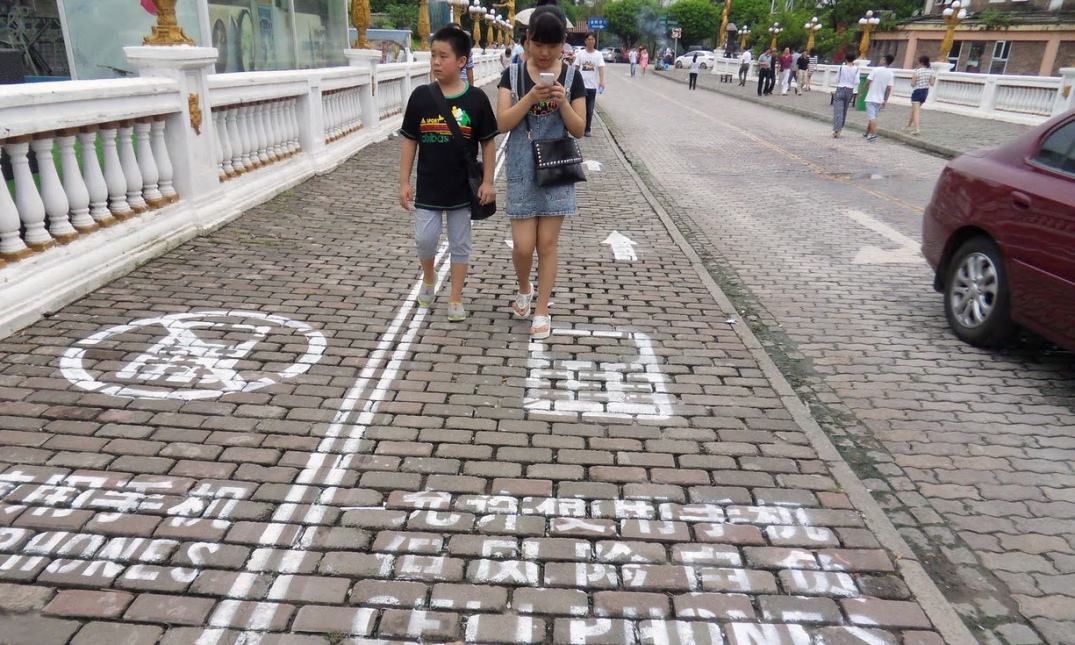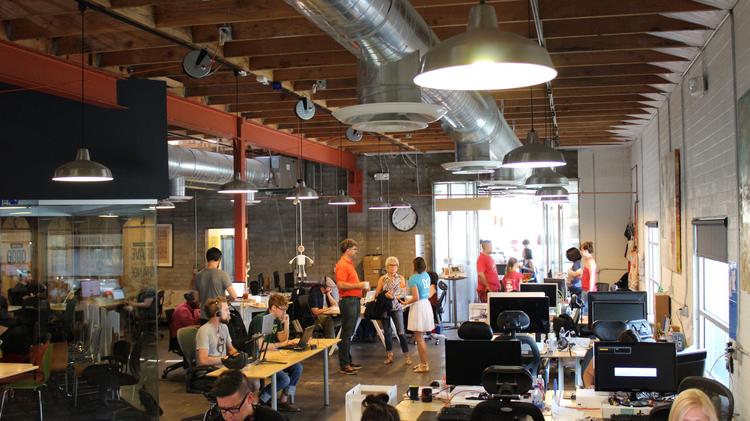Love Halloween? Love STEM? Celebrate the countdown to Halloween with our 31 Days of Halloween STEM Activities. A little Halloween STEM for every day!
Tag: STEAM
Maker City Book: A Practical Guide to Reinvention in American Cities
Chapter 1: Introduction and a Call to Action
Chapter 2: The Maker movement and Cities
Chapter 3: The Maker City as Open Ecosystem
Chapter 4: Education and Learning in the Maker City
Chapter 5: Workforce Development in the Maker City
Chapter 6: Advanced Manufacturing and Supply Chain inside the Maker City
Case Study: Urban Manufacturing Alliance
Chapter 7: Real Estate Matters in the Maker City
Chapter 8: Civic Engagement in the Maker City
To learn more about the Maker City Project including a complete list of cities studied, people interviewed, contributors, and partners go tohttp://makercity.com/
Funded generously provided by the Ewing Marion Kauffman Foundation; fiscal sponsorship provided by Gray Area Foundation for the Arts.
Featured image of CO+HOOTS collaborative workspace in Phoenix “http://media.bizj.us/view/img/6934242/cohoots2*750xx2592-1458-0-135.jpg”
Mercury Transit Music Video
A Mercury Transit Music Video from Solar Dynamics Observatory
Video Credit: NASA‘s Goddard Space Flight Center, Genna Duberstein; Music: Encompass by Mark PetrieExplanation: What’s that small black dot moving across the Sun? Mercury. Possibly the clearest view of Mercury crossing in front of the Sun earlier this week was from Earth orbit. The Solar Dynamics Observatory obtained an uninterrupted vista recording it not only in optical light but also in bands of ultraviolet light. Featured here is a composite movie of the crossing set to music. Although the event might prove successful scientifically for better determining components of Mercury’ ultra-thin atmosphere, the event surely proved successful culturally by involving people throughout the world in observing a rare astronomical phenomenon. Many spectacular images of this Mercury transit from around (and above) the globe are being proudly displayed.
Imagine Science Films
Imagine Science Films is a 501(c)(3) non-profit organization in existence since 2008 committed to promoting a high-level dialogue between scientists and filmmakers.
Their mission is to bridge the gap between art and science through film, thereby transforming the way science is communicated to the public and encouraging collaboration across disciplines.
Together, scientists, who dedicate their lives to studying the world in which we live, and filmmakers, who interpret and expose this knowledge, can make science accessible and stimulating to the broadest possible audience. Imagine Science Films is committed to drawing attention to the sciences, whether it is through art or our community outreach efforts.
Read more about Imagine Science Films here: http://imaginesciencefilms.org
Always practise safe text: the German traffic light for smartphone zombies
 A ‘mobile phone lane’ on a street in a theme park in Chongqing, China. Photograph: Imaginechina/Rex
A ‘mobile phone lane’ on a street in a theme park in Chongqing, China. Photograph: Imaginechina/Rex
The word “smombie” is one of the most recent additions to the German language. Last November, the term – a mashup of “smartphone” and “zombie”, referring to oblivious smartphone users staggering around cities like the undead – was voted Youth Word of the Year in Germany.
The disease is virulent. A recent study of 14,000 pedestrians in Amsterdam, Berlin, Brussels, Paris, Rome and Stockholm found that 17% of people used their smartphone while walking. The heaviest users were 25 to 35-year-olds: almost a quarter of them exhibited smombie-esque behaviour.
Now Augsburg, a municipality outside Munich, has braced itself for this new public peril. After several smombies caused accidents by carelessly crossing tram tracks, city officials decided to install new traffic lights – at ground level.
At Haunstetterstraße station, one of two locations for the experiment, 16 red LEDs, each about the size of a beer mat, are embedded in the pavement next to a tram crossing.
Passengers are divided on their merits. Katja Lechner commutes here daily to university. “OK, you really do see the lights blinking when the tram approaches,” she says. “But that doesn’t stop anybody from crossing, as people rush to catch their trains.” She thinks the €10,000 should have been invested in education.
Arzu Araz, a hairdresser who lives nearby with her seven-year old daughter, disagrees. “The lights are ideal for kids, who notice them immediately,” she says.
Augsburg is not the first city to react. Cologne has equipped three tram crossings with similar lights, prompting the creation of yet another portmanteau: “Bompeln”, an abbreviation of “Boden-Ampeln” (ground traffic lights).
In Munich, where a 15-year-old girl wearing headphones was recently killed by a tram, certain particularly dangerous crossings were fitted with special beacons that send warnings to smartphones enabled with a corresponding app, called Watch Out!
In the US, meanwhile, cities such as Portland, Seattle and Cleveland have experimented with talking buses that alert pedestrians during turns. Rexburg, Idaho has even imposed fines of $50 for texting while walking.
And a theme park in the Chinese city of Chongqing has experimented with a special “phone lane” for pedestrians, itself based on an earlier experiment in Washington, DC.
After a trial period, Augsburg officials will interview tram drivers and passengers before deciding whether to roll the lights out to other stations.
“This is not just about smartphones. The crossing here is so busy and dangerous that we are used to the screeching noise of the tram’s emergency breaks,” says Sebastian Hrabak, owner of the restaurant Schwarze Kiste at Haunstetterstraße station. “But since the lights were installed last week, there hasn’t been a single dangerous incident.”
Have you been a “smombie” yourself ?
Read the full article @ Always practise safe text: the German traffic light for smartphone zombies
CONCERT BAND & SYMPHONIC WINDS @ GCC
| When | Tuesday, May 3, 2016, 7:30 – 9 p.m. |
|---|---|
| Where | Performing Arts Center |
| Contact E-mail | william.humbert@gccaz.edu |
| Contact Name | Bill Humbert |
| Contact Phone | 623.845.3726 |
| Directed by Bill Humbert
Free & open to the public |
CESAR CHAVEZ FILM NIGHT

| When | Wednesday, April 27, 2016, 5 – 8:30 p.m. |
|---|---|
| Where | SU-104E |
| MEChA will be hosting a special screening of the documentary Harvest of the Empire: A History of Latinos in America in honor of Cesar Chavez’s birthday this month. |
DÍA DE LOS NIÑOS CELEBRATION
| When | Tuesday, April 26, 2016, 9 a.m. – 2 p.m. |
|---|---|
| Where | Central Mall |
| El dÍa de los NiÑos/El dÍa de los Libros (Day of the Child/Day of the Book) is a celebration based on childhood and literacy that began in 1997. Borrowing from the traditional Mexican holiday “El dÍa de los NiÑos,” the American version expanded to include literacy when acclaimed author Pat Mora took up the cause in 1997. A year later, the U.S. Congress officially designated April 30 as “Day of the Child.”
Members from GCC’s MEChA Club will set up games to celebrate this event. |
FAFSA WORKSHOP
Volunteer Orientation

Free Arts for Abused Children of Arizona
Free Arts for Abused Children of Arizona is the only nonprofit organization in Arizona delivering creative and therapeutic arts programs to abused and homeless children, ages 3 to 21 years. Established in 1993, Free Arts offers four distinct programs and serves more than 8,000 children annually. We partner with 32 child welfare agencies, spanning 100 + sites throughout Maricopa County, including group homes, crisis shelters, residential treatment facilities, and unaccompanied minor programs. Since our inception we have provided creative healing services to more than 95,000 youth. The dedicated adult volunteers and employees of Free Arts are proud of our twenty-one year history of consistently and compassionately providing quality programs that result in changed lives for vulnerable and neglected children in our community.

Become a caring, adult role model and Free Arts volunteer today!
Volunteer Opportunities Include:
- Mentoring a group of children at a group home, shelter, or treatment center for one hour a week through artistic expression
- Supporting children for one day art events at places like the Phoenix Art Museum, Desert Botanical Gardens, and Arizona Opera
- Assisting children to create, heal, learn and grow during our Summer Camp Series!
All volunteers start by attending a Volunteer Orientation.
These one hour, no obligation orientations are held each month at our office located at 103 West Highland Avenue Suite 200 in Phoenix. Join us to learn how you can give your time to Free Arts and make a difference in the lives of our community’s most vulnerable children.
Click here to learn more about Free Arts.
* Due to facility restrictions volunteers must be 18+
Official Link Provided: http://www.eventbrite.com/e/volunteer-orientation-registration-9469829515?aff=FBAPR



